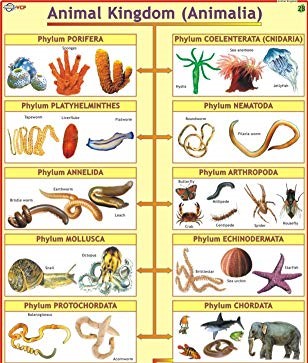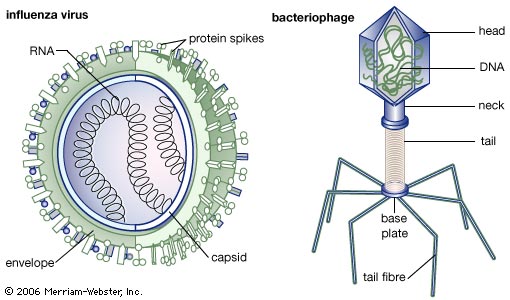- Books Name
- ACME SMART COACHING Biology Book
- Publication
- ACME SMART PUBLICATION
- Course
- CBSE Class 11
- Subject
- Biology
KINGDOM ANIMALIA
These are multicellular eukaryotic organisms.
The cells do not contain cell wall but contain only cell membrane.
They do not perform photosynthesis and have heterotrophic nutrition.
They have the power of locomotion.
They show increased sensitivity through the nervous system
Kingdom Animalia
Multicellular eukaryotic organisms characterize this kingdom. Animals rely on plants for food, either directly or indirectly. Food is digested in an interior cavity, and food reserves are stored as glycogen or fat. Their feeding mode is heterotrophic and holozoic. They have a distinct growth pattern and mature into adults with distinct shapes and sizes. Higher forms have more complex sensory and motor mechanisms. The majority of them can move around. Male and female copulation is followed by embryological development in sexual reproduction. The animal kingdom is the most populous of the five kingdoms. They do not, however, have chlorophyll or a cell wall, as do plants.
Kingdom Animalia is divided into ten subphyla depending on body design or differentiation. These phyla are as follows:
(A) Phylum Porifera:
It is a phylum of organisms that have holes or perforations. Commonly known as Sponges. Poriferans are multicellular organisms with a hard outer skeleton that is non-motile. Their bodies have pores that form a canal system that aids in the passage of chemicals. They lack a well-developed organ or organ system and are not distinguished between head and tail. They primarily live in a marine environment. Spongilla and Sycon are examples of the Porifera phylum.
(B) Phylum Coelenterata (Cnidaria):
Hollow-bellied organisms are included in coelenterates. The presence of a hollow bodily cavity is one of the distinguishing characteristics of this group. The body is made up of two layers of cells: interior and exterior linings, which are differentiated into two ends. All aquatic animals are included in this phyla. Members of this phylum dwell in both colonies (corals) and solitary environments (Sea anemones). Hydra and jellyfish are examples of the phylum Coelenterata.
(C) Phylum Platyhelminthes:
Flatworms are the popular name for Platyhelminthes. Their body shape is complicated, dorsoventrally flattened, and distinct. Tissues are triploblastic and differentiated from three layers of cells. There is no actual interior cavity or coelom in them. They are symmetrical on both sides and can be free-living (Planaria) or parasitic (liver flukes). Tapeworm and Planaria are examples of Platyhelminthes phylum.
(D) Phylum Nematoda:
Nematodes, sometimes known as roundworms, belong to the Phylum Nematoda. The body of a nematode is cylindrical. They are triploblastic and bilaterally symmetrical. They have a fake bodily cavity called pseudocoelom. Elephantiasis and ascariasis are parasitic diseases caused by them. Ascaris and Wuchereria are examples of the phylum Nematoda.
(E) Phylum Annelida:
Annelids, are often known as segmented or ringed worms. They possess a head and tail that are separated by a segmented cylindrical body. The body is symmetrical on both sides and is triploblastic. They have a true cavity in their bodies. Their habitat includes both marine and freshwater environments, as well as land. Earthworms and Leeches are examples of the phylum Annelida.
(F) Phylum Arthropoda:
The term "arthropod" refers to a creature with jointed legs. This phylum includes animals with jointed appendages. This is the animal kingdom's largest phylum. They have jointed legs, an exoskeleton, and a segmented body that is bilaterally symmetrical. Organs and organ systems are well-differentiated. They have an open circulatory system, but no distinct blood vessels. Spiders, butterflies, and mosquitoes are all members of the Arthropoda phylum.
(G) Phylum Mollusca:
Molluscs are a wide group of animals that belong to the Phylum Mollusca. They are triploblastic and bilaterally symmetrical. The body is less segmented, yet organs and organ systems are well-developed. Mollusks typically have an open circulatory system. There are limbs present. Snails and octopuses are examples of the Mollusca phylum.
(H) Phylum Echinodermata:
Echinoderms are animals with spiky skin. They are triploblastic and have radial symmetry. They are true coelomates. The skeletal structure is made up of calcium carbonate and is quite hard. They are aquatic animals that live in the open ocean. Sea urchins and starfish are examples of the phylum Echinodermata.
(I) Phylum Hemichordata:
Hemichordata is a phylum of marine deuterostome organisms that is sometimes referred to as the echinoderms' sister group. The body is soft and delicate, with a proboscis. The epidermis is made up of only one layer. It is made up of worm-like marine invertebrates that are organized into organ systems. They have a circulatory system that is open. Because they are marine, they breathe through their gills. External fertilization is observed, and they have different sexes. Development is a direct process. Hemichordata includes Balanoglossus and Saccoglossus.
(J) Phylum Chordata:
Animals having a flexible cord supporting their dorsal or rear sides belong to the Chordata phylum. The majority of the species in the phylum Chordata are vertebrates or creatures with backbones. They are bilaterally symmetrical, triploblastic, and classified at the organ-system level. They have a nerve cord and a notochord. The circulatory system is one that is closed. Urochordata, Cephalochordata, and Vertebrata are the three subphyla of Chordata. Chordates include pandas, crows, sharks, salamanders, alligators, sea squirts, and many others.

Viruses, viroids, prions and lichens:
Lichens and some acellular species like viruses, viroids, and prions are not included in Whittaker's five kingdom classification system. Here's a quick run-down of what they're all about.
Viruses were not classified since they are not actually 'alive,' as defined by organisms with a cell structure. Viruses are non-cellular organisms with a crystalline structure that is inactive outside of living cells. When they infect a cell, they use the host cell's machinery to duplicate themselves, eventually destroying the host. Viruses are classified as either living or non-living organisms. Dmitri Ivanowsky (1892), who identified specific bacteria as the causal organisms of the mosaic sickness, gave the name virus, which means venom or deadly fluid.Because they passed through bacterium-proof filters, they were discovered to be smaller than bacteria. M.W. Beijerinek (1898) discovered that an extract from sick tobacco plants could infect healthy plants, and he named the fluid Contagium vivum fluidum (infectious living fluid). W.M. Stanley (1935) demonstrated that viruses can crystallize, and that crystals are mostly made up of proteins. Outside of their respective host cell, they are inactive. Viruses are obligate parasites.Viruses include genetic material in the form of RNA or DNA, in addition to proteins. There isn't a single virus that has both RNA and DNA. A virus is a nucleoprotein with infectious genetic material. Plant viruses contain single-stranded RNA, while animal viruses have either single or double-stranded RNA or double-stranded DNA.
Bacterial viruses, also known as bacteriophages (viruses that infect bacteria), are double-stranded DNA viruses that infect bacteria. The nucleic acid is protected by a protein coat called capsid, which is made up of tiny subunits called capsomeres. The geometric forms of these capsomeres are helical or polyhedral. Mumps, smallpox, herpes, and influenza are all diseases caused by viruses. AIDS is also caused by a virus known as HIV in humans.Mosaic formation, leaf rolling and curling, yellowing and vein clearing, dwarfing, and stunted development are some of the symptoms seen in plants.
Viroids: In 1971, T.O. Diener found a novel infectious agent that caused potato spindle tuber disease and was smaller than viruses. It was discovered to be a free RNA that lacked the protein covering that viruses have, therefore the term viroid. The viroid's RNA has a low molecular weight.
Prions: In modern medicine, an agent made up of improperly folded protein has been discovered to spread some infectious brain illnesses. The agent was about the same size as viruses. Prions were the name given to these agents. The most well-known prions disorders are bovine spongiform encephalopathy (BSE), also known as mad cow disease in cattle, and its human counterpart Cr–Jacob disease (CJD).
Lichens are symbiotic (meaning mutually beneficial) interactions between algae and fungi. Phycobiont refers to the algal component, while mycobiont refers to the fungus component. Both are autotrophic and heterotrophic, respectively. Fungi offer refuge and absorb mineral nutrients and water for algae, and algae supply sustenance for fungi. Their relationship is so strong that if you saw a lichen in the wild, you'd never guess it included two different organisms. Lichens are excellent pollutant indicators since they do not develop in polluted environments.


 ACME SMART PUBLICATION
ACME SMART PUBLICATION
